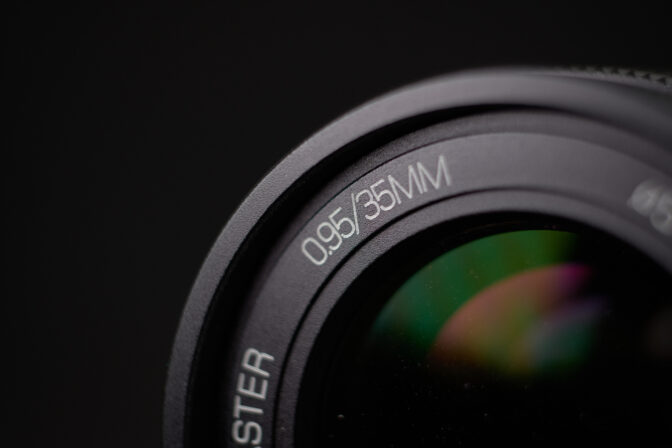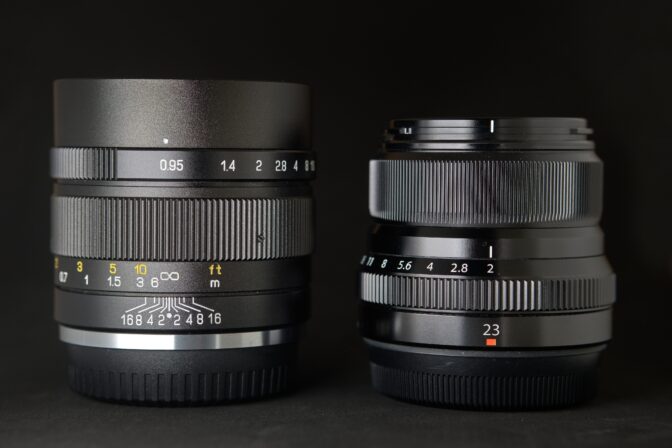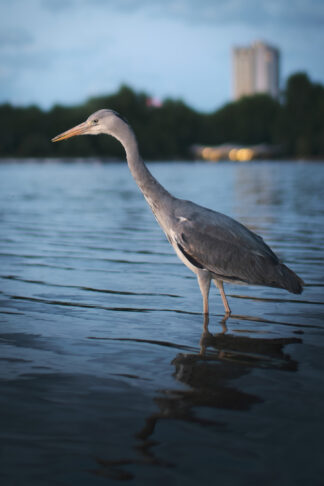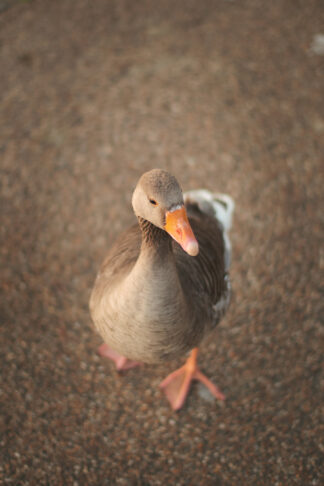Mitakon 35mm f/0.95 ii review
The Mitakon 35mm f/0.95 isn't for everybody. It's a heavy chunk of metal and glass, manual focus only and produces imperfect images. Still, I can't help but love it.
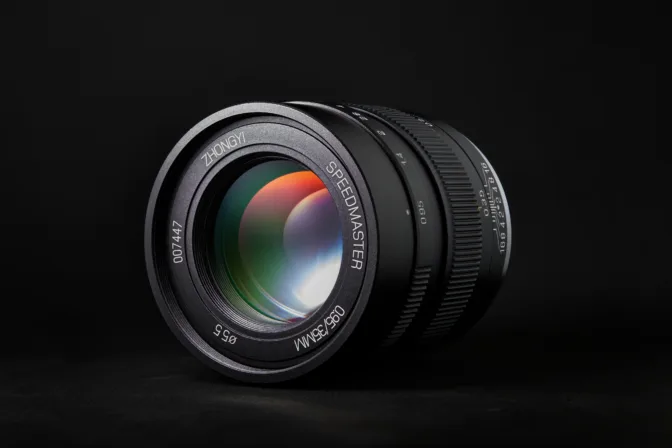
Intro
The Mitakon 35mm f/0.95 is relatively heavy (460g), it flares pretty wildly and it’s manual focus only, if any of this puts you off – this isn’t the lens for you. If however, you can embrace the Mitakon’s quirks, it produces characterful images and is a joy to use.
Why buy the Mitakon 35mm f/0.95? #
The obvious attraction to this lens is its ability to isolate subjects and soak up light. Yet the Mitakon 35mm f/0.95 is surprisingly versatile for both stills and video. It’s sharp in the centre (even wide open) and gets sharper across the frame as you stop it down.
Shallow depth-of-field (DOF)
When isolating a subject or directing attention, shallow depth-of-field can be useful. Very shallow depth-of-field at “normal” focal lengths is usually attributed to larger sensors. But the Mitakon 35mm (Fuji X-Mount) provides a close equivalent to full-frame alternatives.
Equivalence is a sticky subject, but this example might be useful to some. The Mitakon 35mm f/0.95 lens is equal to full-frame 53mm f/1.4 lens (in both field-of-view and depth-of-field).
Low-light shooting
Fujifilm’s current stock of fast primes top out at f/1.4. That may not sound like a big leap from f/0.95, but it’s over a stop slower. Meaning higher ISOs or slower shutter speeds to get the same exposure. If you find yourself out shooting in low-light conditions a lot, the Mitakon might help.
Character
There is more to a lens than sharpness, aberrations and field-of-view. So for now, we’ll call it character, and the Mitakon has a lot of it. The combination of its optical flaws and design decisions, result in unique images. The Mitakon 35mm has a vintage quality and a modern sharpness.
Focusing the Mitakon 35mm f/0.95 #
The Mitakon has a focus throw of roughly 135°. This makes focusing easy and precise at close distances (most of the focus range covers distances up to 1.5m). Beyond 1.5m there is much less rotation needed to move focus. This makes focusing at those distances harder when wide open (even with the increased DOF).
The depth-of-field is obviously very shallow when shooting at f/0.95. The following tips may help increase your keeper rate:
- Focus Peaking Highlight ‘Red (Low)’ (although slightly less visible, low is more precise)
- Acros profile (to contrast with the red focus peaking)
- Lucky imaging (take multiple images to increase your chances of nailing focus)
- Move yourself not your focus when at close distances
Build quality #
The Mitakon features an all metal construction, lending a pleasing heft to the lens. After a year of use in a range of climates and conditions, the lens has held up nicely. The focus ring, initially too stiff, has loosened over time and now offers a great manual focusing experience (a very refreshing change after handling focus-by-wire alternatives). The two copies of the Mitakon 35mm f/0.95 ii tested were consistent in build and image quality.
Clickless aperture ring
The Mitakon 35mm f/0.95 features a clickless aperture ring. Due to its smooth rotation, the aperture ring is unfortunately prone to accidental movement. But, it is worth noting there is a large amount of rotation between f/0.95 and f/1.4. Meaning accidental movements won’t result in a significant change to the aperture.
It’s worth mentioning this is the second generation of the lens. The first Mitakon 35mm f/0.95 was noticeably larger and heavier.
Size and weight
The Mitakon is a short and stocky lens, surprisingly not too much bigger than the Fujicron’s. It is, however, quite a bit heaver than any of the Fuji lenses in the same focal range.
Image quality #
The key takeaway here is that the Mitakon 35mm f/0.95 produces very pleasing images. Unlike many other lenses, the Mitakon seems to lean into its imperfections. The sharpness hotspot, vignetting and distortion might bother some. But, it’s sharp where it needs to be.
Wide open
Straight from f/0.95 the centre of the image is sharp. That sharpness covers the centre part of the frame (picture the middle square of the 3×3 grid overlay). Sharpness then falls off quickly towards the corners.
When stopped down
Stopping down to f/1.4 improves centre sharpness and contrast, but corners remain soft. By f/2.8 the corners have sharpened up considerably and by f/4 sharpness extends across the frame.
Distortion, vignetting and aberrations
There is slight barrel distortion and minor vignetting. Both of which are easily fixed in post production. Chromatic aberration is minimal in most situations. There is visible comatic aberration or coma, clearly visible in some of the samples below.
Sample images #
A mixture of daylight and low-light samples from the Mitakon 35mm f/0.95 ii.
Black & white samples #
The Mitakon 35mm f/0.95 produces very pleasing black and white images. Even when shooting wide open there’s a nice tonality and pleasing contrast characteristics. Over time I started to prefer shooting the lens in B&W due to the way it sometimes renders colours strangely.
Video samples #
The smooth and precise manual focus and lack of focus breathing make the Mitakon a great option for video. The optical characteristics that make this lens great for stills also lend themselves to video.
Filmed in Eterna film simulation on the Fujifilm X-T4 and Mitakon 35mm f/0.95 ii
Video samples of the Mitakon 35mm f/0.95 ii, filmed in Eterna film simulation on the Fujifilm X-H1.
Recommended accessory #
As mentioned, the Mitakon is prone to flaring. A cheap screw-in lens hood makes a big difference.

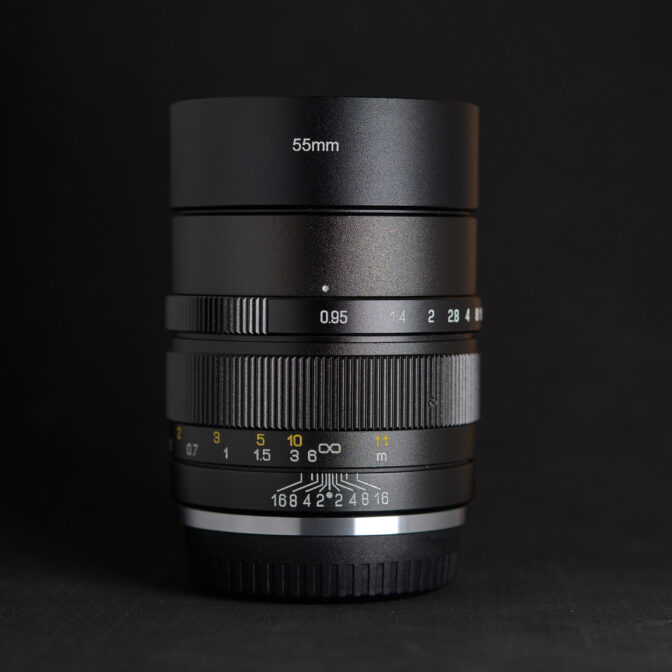
Mitakon 35mm f/0.95 with and without lens hood
Alternative 35mm lenses #
When it comes to 35mm primes, the Fuji X-Mount is spoilt for choice. There is however no lens at this focal length that is as fast as the Mitakon f/0.95. So if your ultimate goal is subject isolation or low-light photography the Mitakon 35mm f/0.95 ii can’t be beaten.
Manual focus 35mm lenses
The following list is in price order (low to high):
- Meike MK-35mm f/1.7
- Meike MK-35mm f/1.4
- 7artisans Photoelectric 35mm f/1.2
- Samyang/Rokinon 35mm f/1.2 ED AS UMC CS
- Lensbaby Burnside 35mm f/2.8
- Mitakon 35mm f/0.95 ii
This lens is the priciest (and heaviest) on the list. For comparison the Meike MK-35mm f/1.7 can be had for roughly 16% of the cost of the Mitakon. So, if budget is your main consideration the Mitakon 35mm might not be the right option.
Autofocus 35mm lenses
The following lists are in price order (low to high):
- Fujifilm XC 35mm f/2
- Viltrox 33mm f/1.4
- Fujifilm XF 35mm f/2 R WR
- Fujifilm XF 35mm f/1.4 R
- Mitakon 35mm f/0.95 ii
- Zeiss Touit 32mm f/1.8
If autofocus is critical to you, the Mitakon is obviously isn’t the right choice. From an optical standpoint, all the lenses above also have fewer flaws. So why would you choose the Mitakon 35mm over the above choices? If you enjoy manually focusing, all the above lenses are focus-by-wire and can’t provide the tactile feedback a fully manual lens can. In addition to the shallower depth-of-field this lens will also give you more flexibility in low-light. On a more subjective note, you may even prefer the images the Mitakon 35mm f/0.95 produces.
More Fujifilm articles
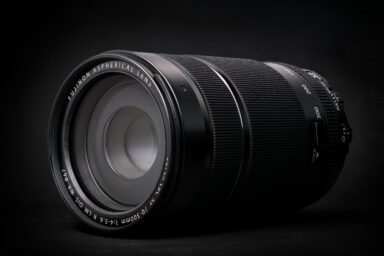
Fuji 70-300 review
The compact size, considerable reach and weather-resistant build of the Fuji 70-300 make it a very …
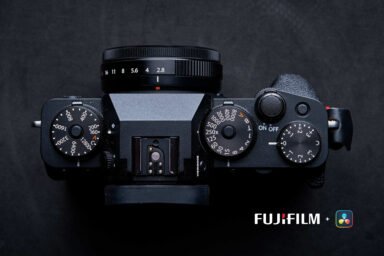
Fujifilm metadata in DaVinci Resolve
Quickly see what lens, exposure and settings were used for each Fujifilm clip within DaVinci Resolv…
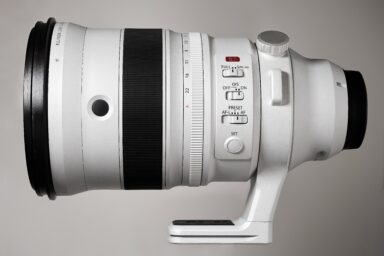
Fuji 200mm f2 review
The Fuji 200mm f2 has been nicknamed "The great white sharp", we borrowed one from Fujifilm to find…
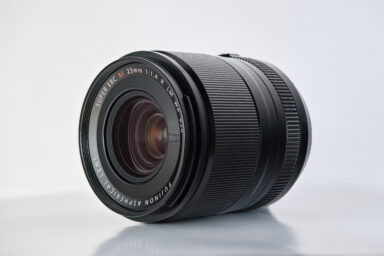
Fuji 23mm f1.4 review
The latest Fuji 23mm is bigger, heavier and more expensive than the other 23mm offerings from Fujif…
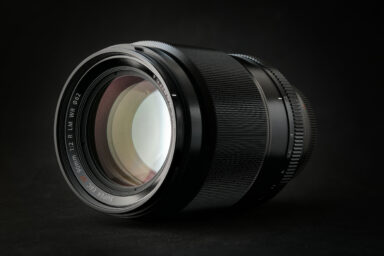
Fuji 90mm f2 field test
Field testing the Fuji 90mm f2 in the Cairngorms National Park, Scotland.
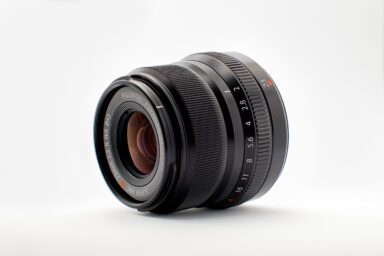
Focus stacking with Fuji cameras
A concise overview of how to use Fujifilm's in-camera focus bracketing feature with example images.…
